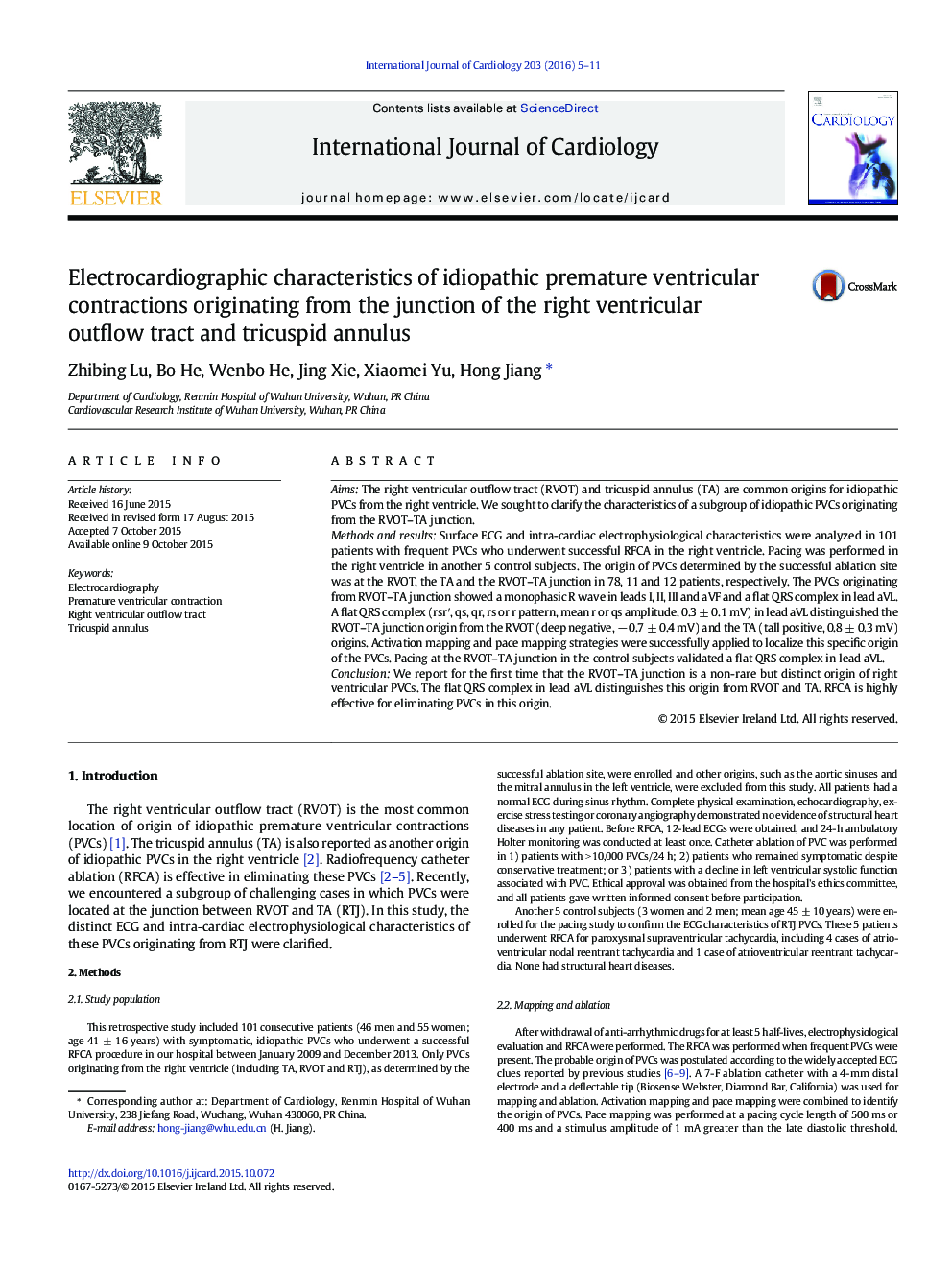| کد مقاله | کد نشریه | سال انتشار | مقاله انگلیسی | نسخه تمام متن |
|---|---|---|---|---|
| 5965545 | 1576148 | 2016 | 7 صفحه PDF | دانلود رایگان |
AimsThe right ventricular outflow tract (RVOT) and tricuspid annulus (TA) are common origins for idiopathic PVCs from the right ventricle. We sought to clarify the characteristics of a subgroup of idiopathic PVCs originating from the RVOT-TA junction.Methods and resultsSurface ECG and intra-cardiac electrophysiological characteristics were analyzed in 101 patients with frequent PVCs who underwent successful RFCA in the right ventricle. Pacing was performed in the right ventricle in another 5 control subjects. The origin of PVCs determined by the successful ablation site was at the RVOT, the TA and the RVOT-TA junction in 78, 11 and 12 patients, respectively. The PVCs originating from RVOT-TA junction showed a monophasic R wave in leads I, II, III and aVF and a flat QRS complex in lead aVL. A flat QRS complex (rsrâ², qs, qr, rs or r pattern, mean r or qs amplitude, 0.3 ± 0.1 mV) in lead aVL distinguished the RVOT-TA junction origin from the RVOT (deep negative, â 0.7 ± 0.4 mV) and the TA (tall positive, 0.8 ± 0.3 mV) origins. Activation mapping and pace mapping strategies were successfully applied to localize this specific origin of the PVCs. Pacing at the RVOT-TA junction in the control subjects validated a flat QRS complex in lead aVL.ConclusionWe report for the first time that the RVOT-TA junction is a non-rare but distinct origin of right ventricular PVCs. The flat QRS complex in lead aVL distinguishes this origin from RVOT and TA. RFCA is highly effective for eliminating PVCs in this origin.
Journal: International Journal of Cardiology - Volume 203, 15 January 2016, Pages 5-11
